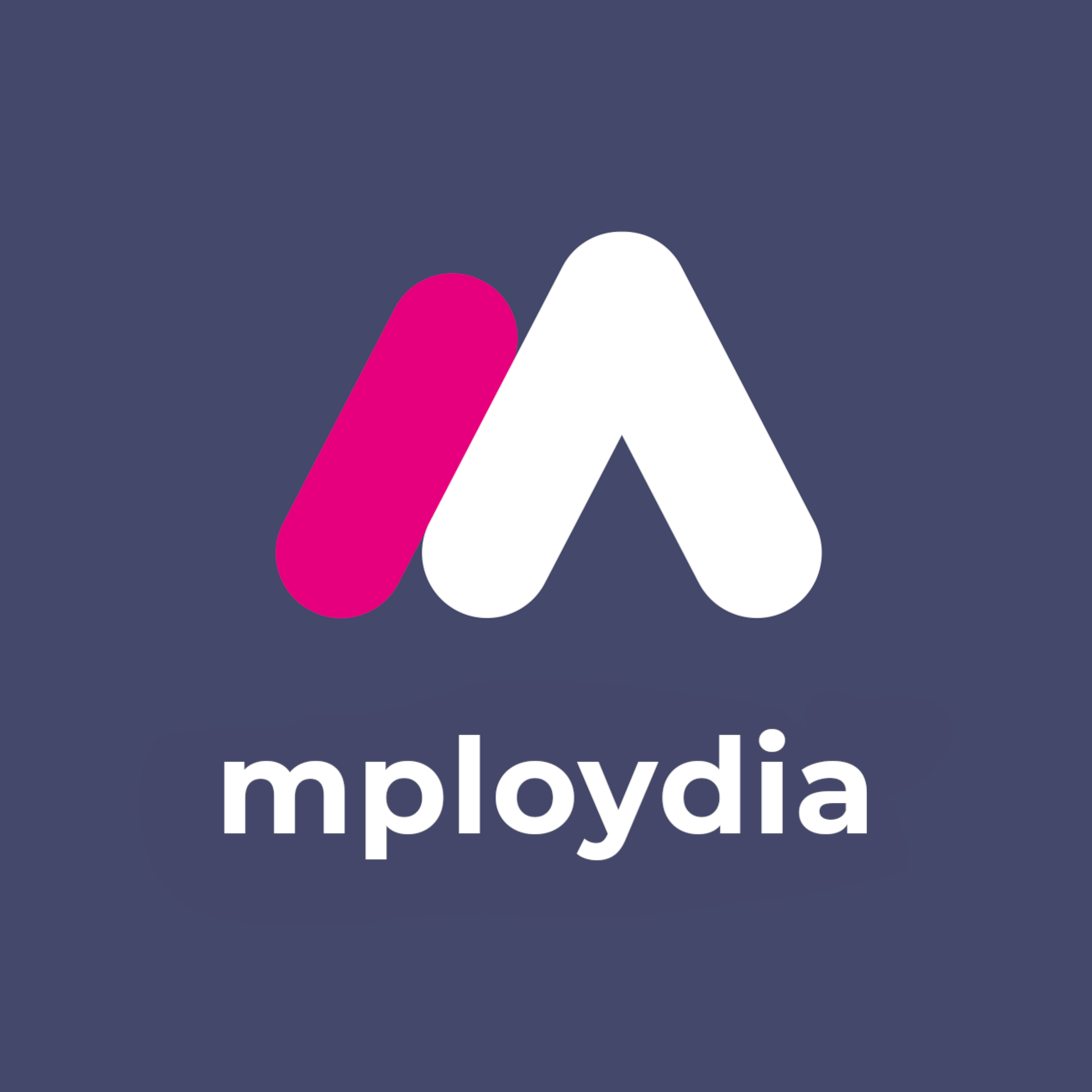
Reverse Mentoring: How Graduates Teach Core Digital Skills
Introduction: why reverse mentoring belongs on your roadmap now
Digital transformation is stalling in too many organisations for the same reason: those who own decisions often don’t own today’s digital instincts. Graduates do. Reverse mentoring fixes that, fast. It pairs early‑career employees as mentors with senior staff as mentees, to transfer practical, job‑relevant digital skills. It’s not fluffy. It’s a structured, measurable way to modernise how teams work, reduce waste, and unlock value. If you want adoption of AI, automation, and data tools to stick, stop broadcasting training from the top and start learning from the bottom. Here’s the blueprint.
What is reverse mentoring and why it works today
Reverse mentoring is a formal, goal‑driven relationship where a less‑tenured employee mentors a more‑tenured colleague. The focus here is digital: tools, workflows, and behaviours that improve speed, quality, and collaboration. This is not about age. It’s about proximity to modern tools and habits. Graduates often live in the workflows the business wants to adopt. That proximity is an asset.
The digital inversion: where graduates hold the edge
- Native fluency with cloud collaboration: Teams, Slack, Google Workspace, Microsoft 365, Notion, Miro.
- Comfort with AI assistants: ChatGPT, Copilot, Gemini, and how to craft prompts, verify outputs, and integrate results into work.
- Low‑code and automation: Power Automate, Zapier, Make for eliminating repetitive tasks and linking systems.
- Data hygiene and dashboards: structuring data, building simple visualisations in Power BI/Tableau/Sheets, and making decisions from metrics.
- Digital etiquette: concise async updates, clean documentation, meaningful meeting notes, and shareable templates.
The business case in practice
Reverse mentoring closes the adoption gap. Expect faster onboarding to new tools, fewer manual errors, clearer documentation, and better knowledge sharing. You’ll see fewer bloated meetings and more asynchronous progress. Properly run, it becomes your cheapest, fastest internal enablement engine.
A practical blueprint to launch in 60 days
- Define the mission and scope
- Pick 3 business outcomes that matter now, e.g. reduce reporting time for managers, increase CRM hygiene, or standardise project updates.
- Limit scope to high‑leverage workflows, not tool tourism. Tie each outcome to a measurable signal.
- Appoint an executive sponsor
- One senior leader publicly backs the programme, shows up to the kick‑off, removes blockers, and reviews metrics monthly.
- Build a small core team
- Roles: programme lead, data/metrics analyst, enablement lead, IT liaison, HR adviser. Keep it lean and decisive.
- Select pilot departments
- Choose teams with urgent pain and clear processes: Sales, Finance, Operations, HR. Avoid sprawling, chaotic areas for the pilot.
- Recruit graduate mentors
- Invite 10 to 20 graduates or early‑career staff with strong digital fluency and communication skills. Use clear selection criteria and a short skills self‑assessment.
- Enrol senior mentees
- Aim for 1:1 or 1:2 mentor:mentee ratios. Prioritise managers and influencers whose behaviour sets norms. Secure line‑manager consent.
- Match mentors and mentees
- Consider function, tools, goals, time zones, personalities. Use a simple survey and matching matrix. Avoid direct reporting lines.
- Establish safeguards and agreements
- Confidentiality, psychological safety, time commitments, and outcome focus. Provide a short template agreement for both parties to sign.
- Provide mentor and mentee training
- Mentors: teach how to teach, not just how to use tools.
- Mentees: teach how to learn, set goals, and adopt new habits.
- Run an 8‑week cadence
- Weekly 60‑minute sessions, plus a 15‑minute check‑in midweek.
- Each session delivers one behaviour change tied to a business outcome.
- Measure relentlessly
- Baseline first. Track adoption, time saved, quality improvements, and participation. Publish a simple dashboard weekly.
- Review, iterate, scale
- At week 8, present results to the sponsor group. Fix gaps. Expand to more teams with proven assets and templates.
Selecting and preparing graduate mentors
Selection criteria
- Tool proficiency across the chosen stack. Ask for quick screen‑share demos to validate.
- Communication clarity. Strong written summaries and confident, respectful facilitation.
- Bias to action. Evidence of building templates, automations, or dashboards.
- Professional maturity. Can handle senior stakeholders and push back tactfully.
Training your mentors
- Teaching fundamentals: explain, demo, practice, review, and assign.
- Scaffolding: break workflows into steps, use checklists, and layer complexity gradually.
- Troubleshooting: diagnose issues live, think aloud, and capture fixes as reusable guides.
- Change psychology: how to handle resistance, give feedback, and celebrate small wins.
- Accessibility and inclusion: ensure materials and sessions fit varied needs.
Incentives and recognition
- Digital badges tied to outcomes achieved.
- Recognition in town halls and internal comms.
- Stretch projects: lead a cross‑team clinic or build an internal enablement asset.
- Link to performance goals where appropriate.
Preparing senior mentees and managers
Expectations and etiquette
- Show up prepared with a real task. No theoretical tours.
- Cameras on, distractions off. This is a working session, not a lecture.
- Adopt one change per week. Commit to practice between sessions.
- Ask questions openly. The mentor owns the process, you own the outcome.
Handling ego and resistance
- Set the frame: this is peer expertise, not hierarchy.
- Normalise “I don’t know.” Model vulnerability at the top.
- Use business language. Focus on time saved, risk reduced, and output quality, not gadgetry.
- Address fear of obsolescence. Position digital skills as leadership leverage.
A pragmatic curriculum: what graduates should teach
Foundational digital workflows
- Modern file hygiene: versioning, naming conventions, shared drives, and permissions.
- Collaboration basics: Teams/Slack channels, threads, mentions, and clean async updates.
- Meeting discipline: pre‑reads, decisions logs, action trackers, and recorded demos.
AI and automation
- Prompting that delivers: context, role, constraints, examples, and verification.
- AI in everyday work: summarising calls, drafting briefs, turning notes into tasks.
- Low‑code flows: connect email, Sheets/Excel, Forms, and CRM to cut copy‑paste.
- Human‑in‑the‑loop controls: approvals, logs, and audit trails.
Data literacy
- Basic data modelling: tidy columns, data types, and validation.
- Building live dashboards in Power BI/Tableau/Looker Studio.
- Sensible metrics: lead vs lag indicators, and how to pick a few that matter.
- Data storytelling: concise insight, clear visuals, and a single action.
Collaboration and knowledge management
- Notion/Confluence/SharePoint for simple knowledge bases.
- Templates: project starter kits, weekly status reports, and SOPs.
- Searchability: tags, summaries, and consistent structure.
Digital safety and compliance
- Password managers, MFA, and phishing awareness.
- Safe AI usage policies: sensitive data rules, red‑flag prompts, and output checks.
- File sharing rules with vendors and clients.
Customer‑facing digital
- CRM hygiene: contact dedupe, field standards, and notes that sell.
- Social listening and outreach finesse.
- Virtual selling: structuring demos, using recordings, and follow‑up automation.
Example 8‑week curriculum path
- Week 1: Workflow audit and priorities. Map current habits, choose three quick wins.
- Week 2: Collaboration upgrade. Channels, async updates, and decisions logs.
- Week 3: AI assistance. Meeting notes to action items and first‑draft documents.
- Week 4: Data hygiene. Clean a live dataset and build a mini dashboard.
- Week 5: Automation. Remove one repetitive task with Power Automate or Zapier.
- Week 6: Knowledge base. Create a lightweight SOP, template, and checklist.
- Week 7: Digital safety. MFA, password hygiene, and safe AI practices.
- Week 8: Showcase. Present results, quantify time saved, agree next steps.
Session design that actually changes behaviour
Structure of a 60‑minute session
- 0–5: Confirm business outcome and today’s target behaviour.
- 5–15: Baseline demo. Mentee shows the current way. Measure time and pain points.
- 15–35: Mentor demo and guided practice on the mentee’s real work.
- 35–50: Mentee runs the new workflow solo while narrating.
- 50–60: Commitments. Document the new SOP, define the micro‑challenge, and schedule the check‑in.
Micro‑challenges and on‑the‑job application
- One action, two constraints, clear deadline. Example: “Automate weekly status email from a Teams channel by Friday, with a manager approval step.”
- Provide a short checklist and a template.
- Require a 2‑minute screen recording as evidence.
Documentation and assets
- A one‑page SOP: purpose, steps, checklist, common failure modes, and links.
- A 3‑minute demo video.
- A template file or automation flow export.
- Store assets in a shared knowledge base, tagged by team and outcome.
Measuring impact and proving ROI
Baseline before you start. Compare against after. Tie metrics to business outcomes, not vanity numbers. Track weekly.
Core KPIs
- Adoption: percentage of mentees using the new workflow 30/60/90 days later.
- Time saved: measured reduction on a repeatable task. Validate with a sample and a simple stopwatch.
- Quality: error rate, rework tickets, or customer complaints linked to the process.
- Speed: cycle time to complete a standard task.
- Enablement NPS: mentee satisfaction with perceived usefulness and confidence.
- Knowledge assets: number of SOPs/templates produced and reused by others.
- Security hygiene: MFA enabled, password manager use, phishing test pass rates.
Methods to ensure credible data
- Use before/after time‑on‑task measures for the exact process targeted.
- Run a small control group that doesn’t receive mentoring during the pilot.
- Tag outputs produced with the new workflow for easy counting.
- Capture qualitative feedback from managers on observed behaviour change.
Reporting cadence
- Weekly: traffic‑light dashboard on adoption, time saved, and risks.
- Monthly: case studies of quantified wins.
- Pilot end: consolidated ROI narrative with specific examples and assets produced.
Governance, risk, and cultural guardrails
Guardrails to protect people and data
- Written agreement on confidentiality and data handling.
- No sensitive data in AI tools unless approved. Provide a red‑flag list and approved alternatives.
- IT reviews any automation that touches core systems.
- Clear escalation routes for issues.
Cultural norms that make it safe and effective
- Psychological safety: mistakes are normalised and documented without blame.
- Respect the mentor role. The most senior person in the meeting is the learner.
- Time protection: both parties block the hour. No multi‑tasking.
- Inclusion: accessible materials and flexible scheduling.
- Recognition: public credit for mentors and mentees who ship real improvements.
Scaling and sustaining reverse mentoring
Beyond the pilot
- Create a reverse‑mentoring community of practice with monthly clinics.
- Build an internal marketplace where leaders post problems and mentors pitch solutions.
- Turn the best sessions into standard enablement modules.
- Refresh cohorts every 6 months to avoid stagnation and capture new tool changes.
Operating model at scale
- Playbooks: matching, session templates, and measurement guides.
- Badging: bronze, silver, gold levels tied to assets produced and outcomes delivered.
- Governance: lightweight review board for new automations and AI usage.
- Onboarding: all new managers get a reverse‑mentoring cycle in their first 90 days.
Common pitfalls and how to avoid them
- Pitfall: Tool‑tourism sessions with no behaviour change. Fix: Anchor every session to a live task and a time‑boxed micro‑challenge.
- Pitfall: One‑and‑done meetings. Fix: Commit to an 8‑week cadence. Protect the calendar.
- Pitfall: Seniority overrides learning. Fix: Sponsor resets expectations publicly. Mentors run the agenda.
- Pitfall: No baseline metrics. Fix: Time the current workflow on day one.
- Pitfall: Unreviewed automations cause incidents. Fix: Create a simple approval checklist and IT oversight for flows touching core systems.
- Pitfall: Burnout for mentors. Fix: Limit mentees per mentor, rotate cohorts, and reward contributions.
- Pitfall: Shadow systems and scattered assets. Fix: Centralise SOPs, templates, and recordings with clear tags.
Example playbook snippets
Finance: closing faster with clean data
- Problem: Month‑end close drags due to manual reconciliations.
- Intervention: Mentor teaches data cleaning in Excel/Power Query, sets naming conventions, automates data pulls via Power Automate, and builds a close dashboard.
- Outcome: Fewer errors, faster reconciliations, and a single source of truth for the close checklist.
Sales: better pipeline hygiene and faster follow‑up
- Problem: CRM full of duplicates and vague notes, slow follow‑ups.
- Intervention: Mentor standardises fields, creates a notes template, sets automated tasks from meeting notes via AI, and builds a next‑action dashboard.
- Outcome: Clearer pipeline, faster responses, and better manager reviews.
HR: lean hiring coordination
- Problem: Interview scheduling chaos, scattered feedback.
- Intervention: Mentor implements a shared scheduling tool, a feedback form that auto‑aggregates into a dashboard, and a weekly async update channel.
- Outcome: Less email back‑and‑forth and faster decision cycles.
For graduates: how to teach like a pro
Ten tactics to make your mentoring stick
- Start with outcomes. Ask “what will we do faster or better after this?”
- Audit the current process. Watch, time, and note friction.
- Teach one behaviour at a time. Ruthlessly remove extras.
- Demo with the mentee’s real work, not dummy data.
- Narrate your decisions. Explain why, not just how.
- Hand over the keyboard early. Let them drive.
- Document during the session. Build the SOP as you go.
- Assign a micro‑challenge. Make it small and specific.
- Follow up midweek. Answer questions, unblock, and praise progress.
- Log outcomes. Capture time saved, errors avoided, and assets created.
Simple tools that help you teach
- A prepared checklist and template for each topic.
- A timer to keep the session honest.
- A screen recorder for quick recap videos.
- A shared folder with clean naming conventions.
- A parking‑lot list for topics to handle later.
Ready to get started?
Stop waiting for top‑down training to land. Pick one department, recruit ten graduates, set three measurable outcomes, and run an 8‑week pilot. Measure, publish, improve, and scale. Reverse mentoring works when you make it concrete, respectful, and relentlessly tied to real work. Do that, and graduates won’t just learn the business. They’ll help modernise it.
Next Steps
Want to learn more? Check out these articles:
Mastering Self-Regulation Techniques for Workplace Success
5 Reasons Why Job-Seekers Need to Become Highly Skilled in AI
Essential Soft Skills for New Graduates in the UK Job Market
Check out our Advanced Employability Course for all the help you need to get your dream job, fast.


